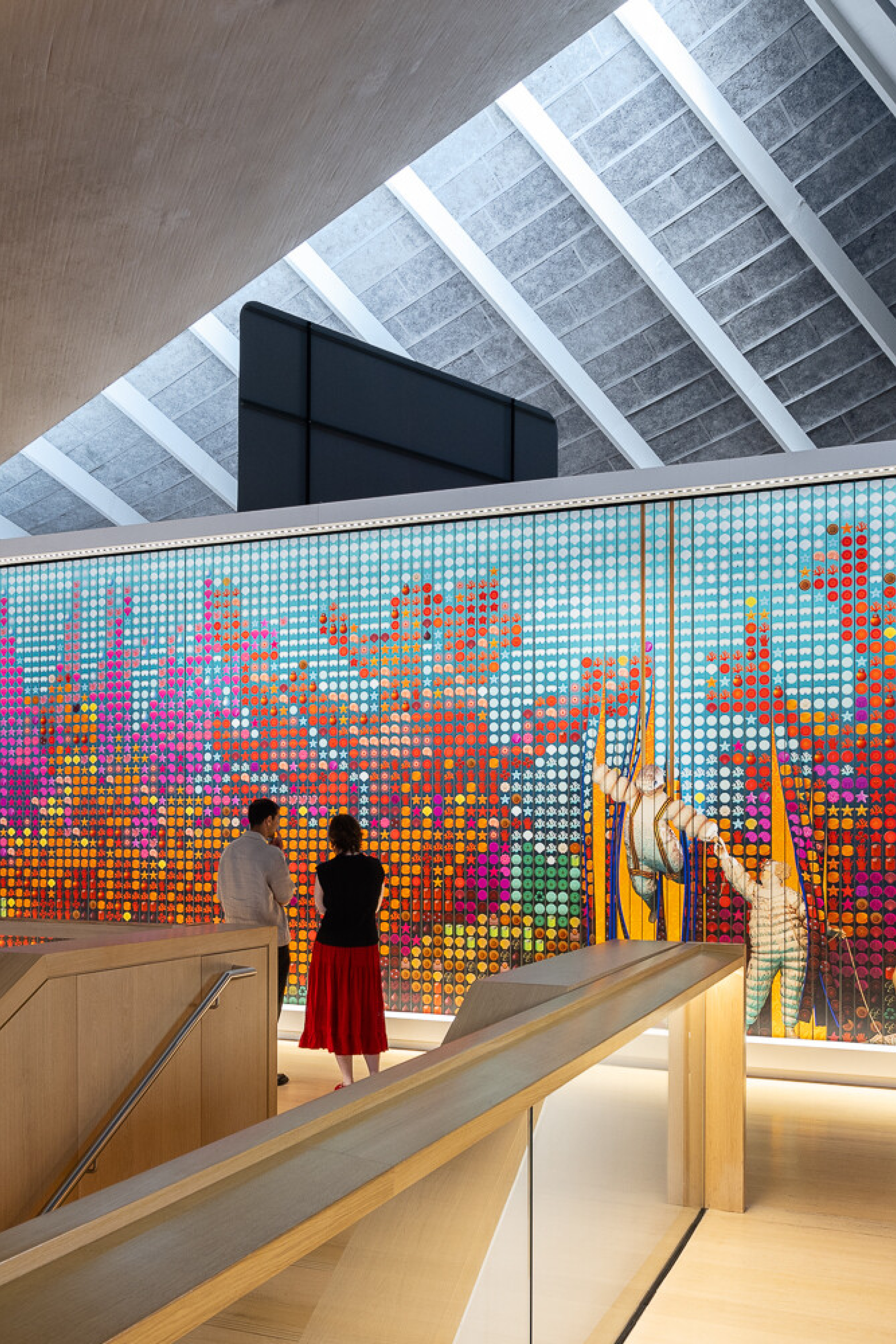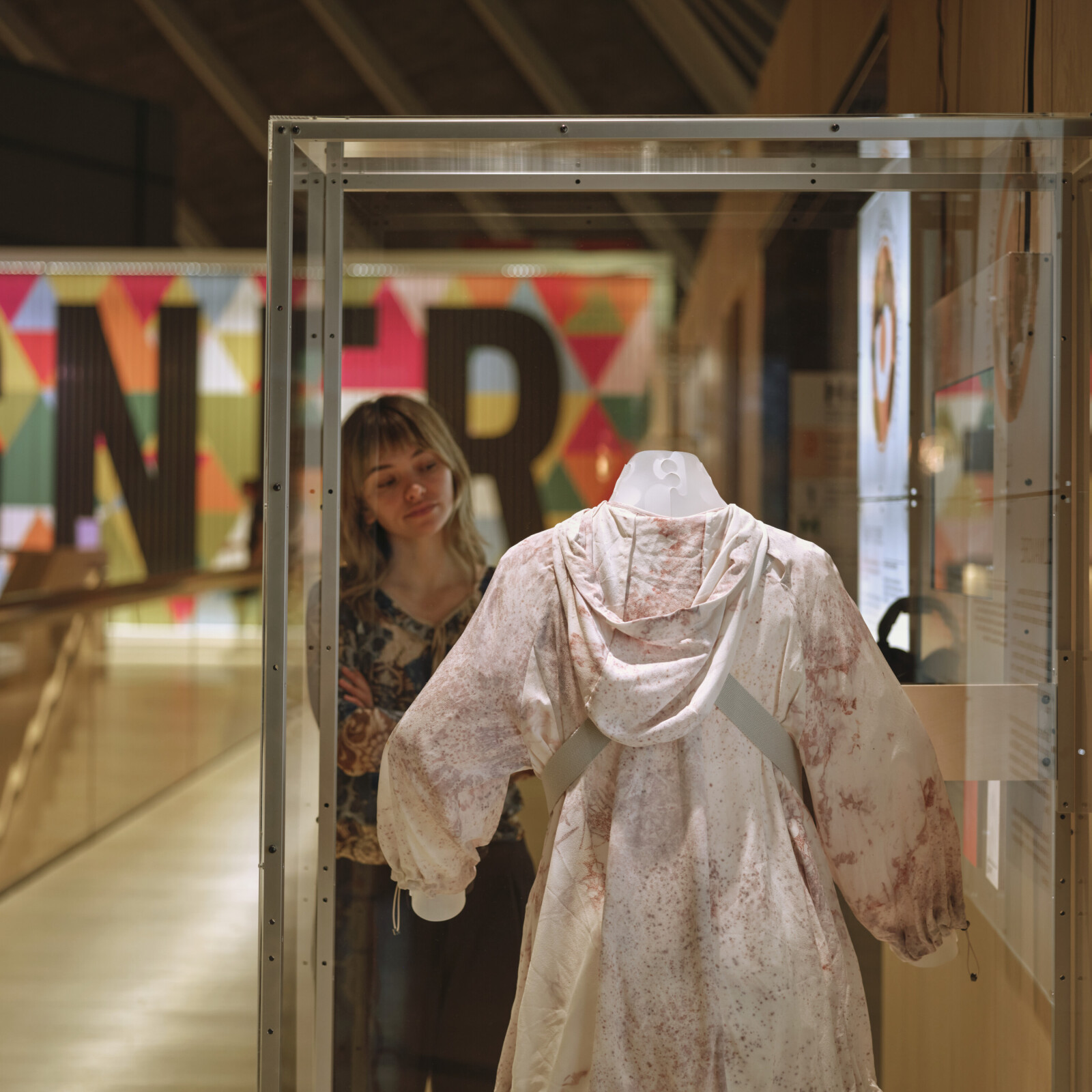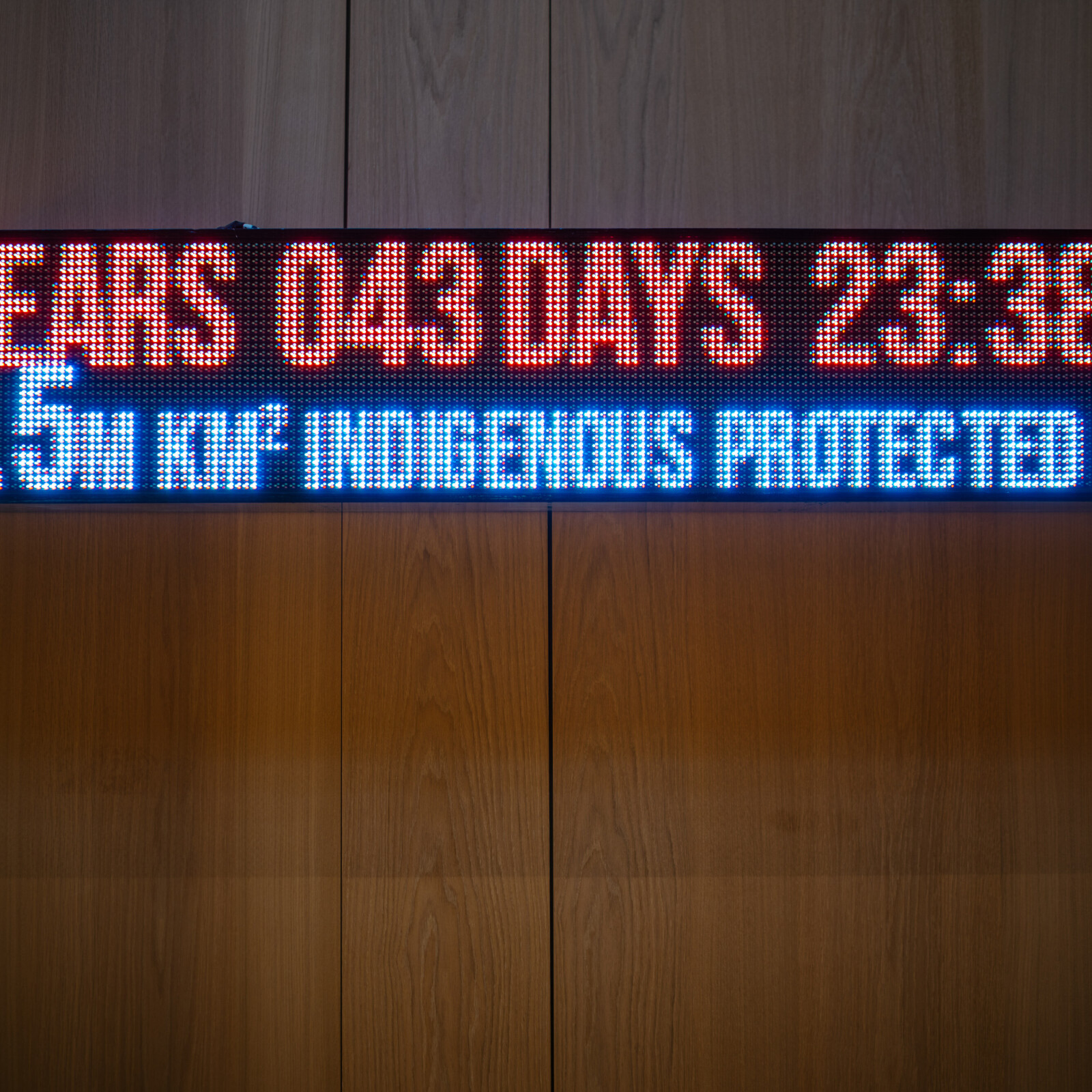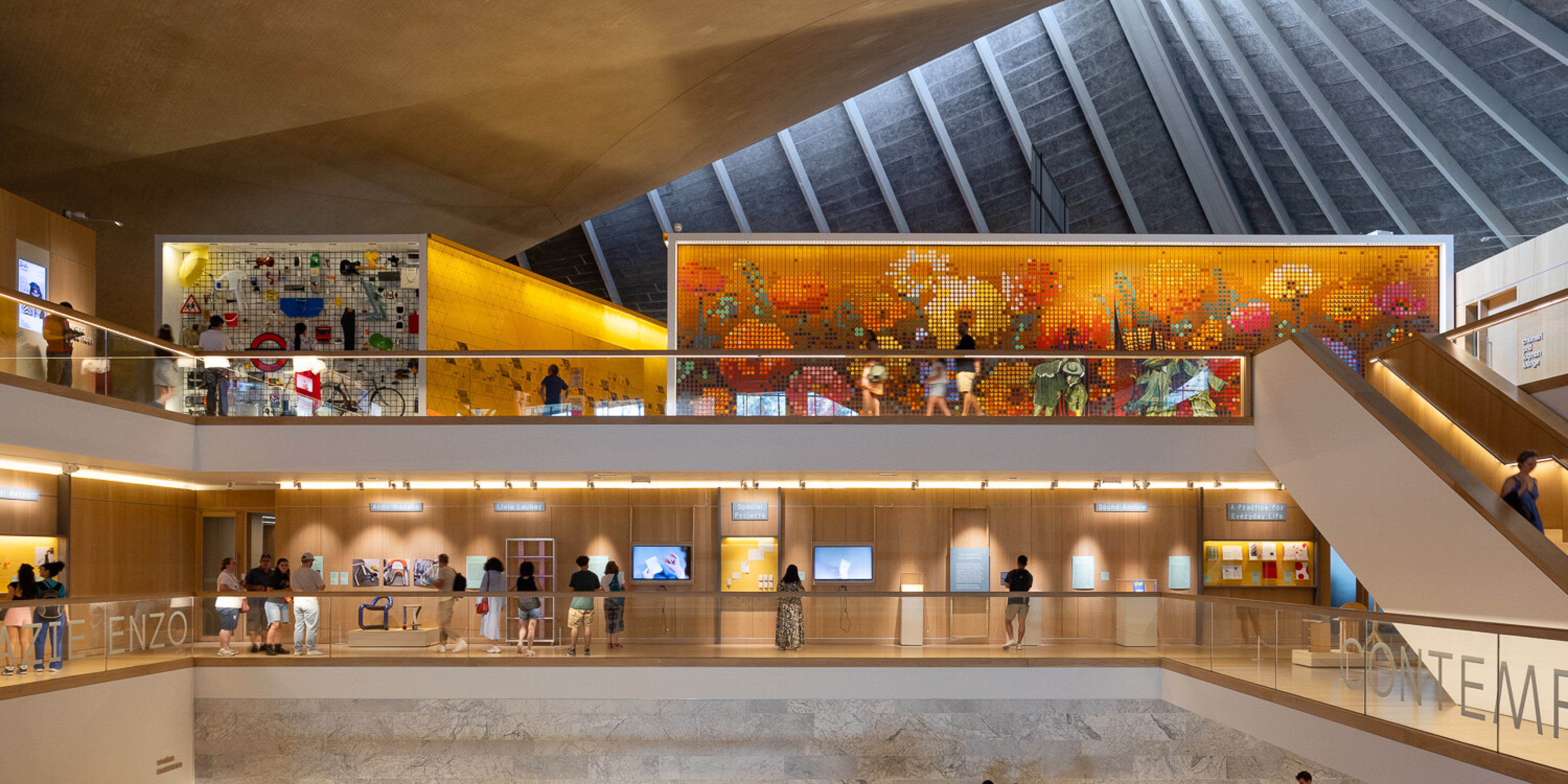
Fables for our Time is a triptych of stories about environmental urgencies, which uses folktales and a new collection of emoji to examine humanity’s relationship with the natural environment.
Fables for our Time features three panels, each of which tells a particular story about an ecosystem that is vital to a thriving planet: the ecosystems of bees, coral and mushrooms.
Each artwork in the display consists of three layers: the foreground for storytelling, the midground for depicting environments in friezes, and the background offering a glimpse of another world. The three scenes are presented as contemporary folktales, with narrators in the foreground who advocate for the primacy of natural systems in the human story.
From afar, the artworks show a meadow with flowers, mushrooms, or a coral reef. Up close, they reveal hundreds of icons representing ecosystems and human interactions, including elements that change, pollute, or mimic nature.
Each of the panels is made up of hundreds of emoji in a mosaic-like pattern, or a pixellated form of cross-stitch embroidery. The emoji represent both natural systems and human ones, from cells and species to pesticides and waste. There is insect, plant and marine life alongside batteries, cigarette butts and Wi-Fi symbols. All have been designed specially for this commission.
The three environmental systems in which the stories are set are based on bee colonies, coral reefs and mycelium networks.
Bee colonies
Bee colonies are an example of efficient organisation, fair resource allocation and resilience within complex systems and cooperative ecosystems. The decline of bee populations, known as Colony Collapse Disorder, will lead to broader ecological and societal imbalances.
The sound oscillation patterns, revealed behind the floral frieze, represent bee-hearing. Flowers emit electrowaves and bees buzz around them, telling them that they are ready to be pollinated. The low electric hum can only be heard from a short distance so the bees dance close to flowers, carefully listening to their sweet songs.
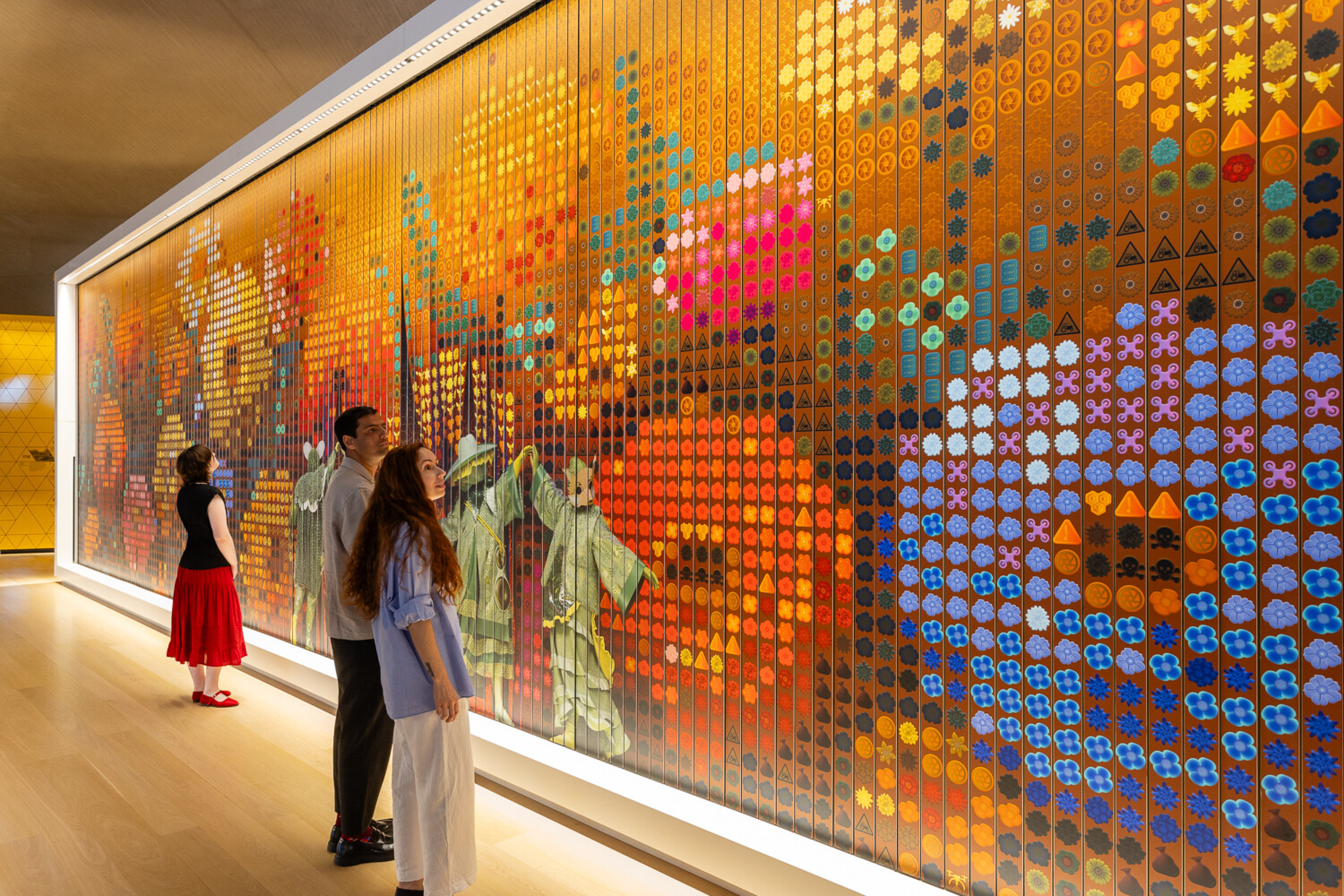
Coral reefs
Coral reefs offer lessons about interconnectedness, adaptability and the importance of preserving biodiversity within complex ecosystems, highlighting the need for sustainable conservation practices to safeguard marine life and the many threatened or already bleached coral reefs.
Coral larvae are attracted to the tingling, bubbly sound of healthy reefs. In fact, this sound can be played in dead reefs to attract larvae to revive them. The bubbly quality of these sounds is translated into patterns revealed behind the coral reef frieze.
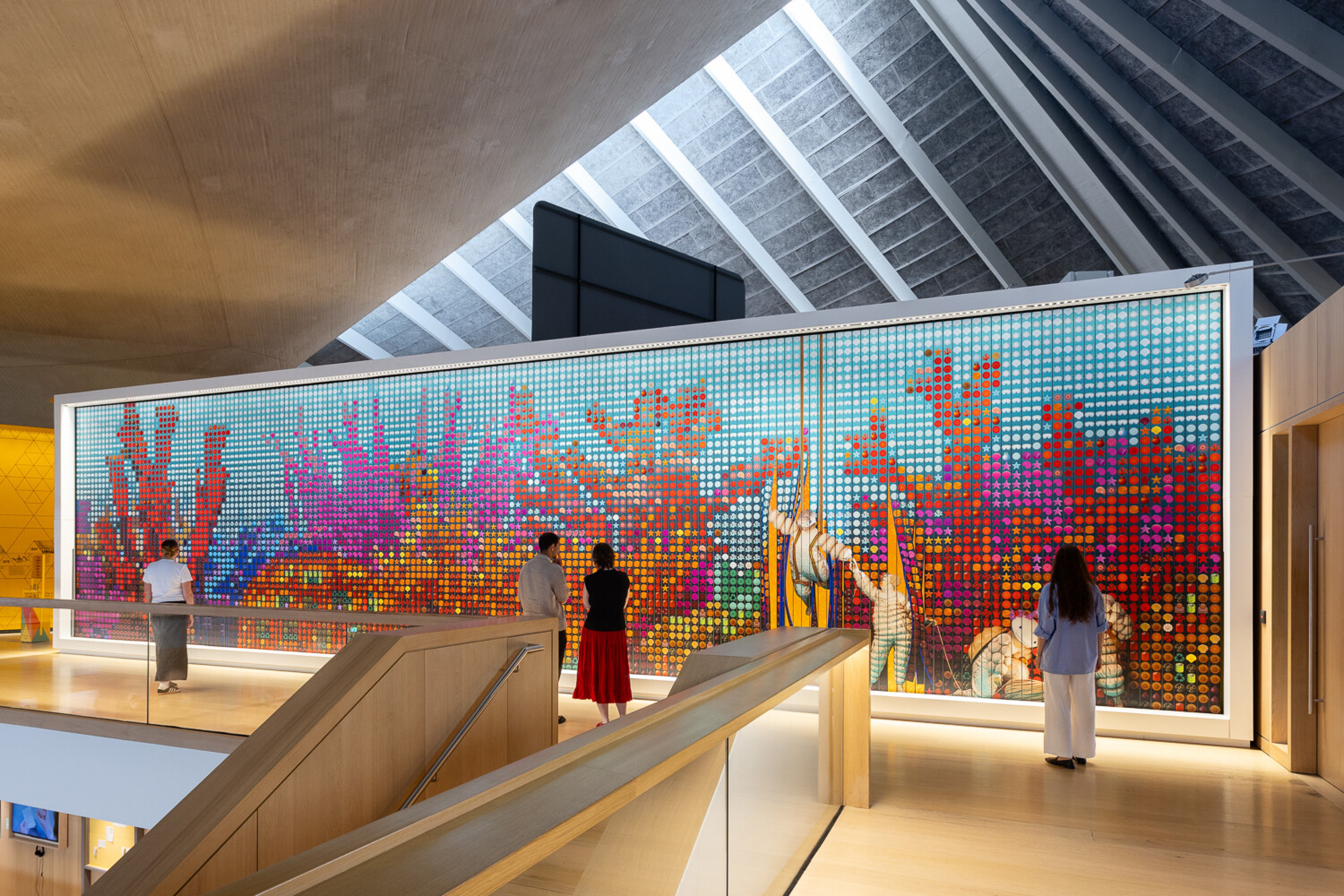
Mycelia
Mycelia teach us about decentralised communication networks, nutrient cycling and symbiotic relationships, offering lessons on efficient resource utilisation and interconnectedness within ecosystems. The "wood wide web" faces threats from activities like mass agriculture and urbanisation, which disrupt its balance and functionality.
Behind the mushroom frieze we can see a pattern representing Mycorrhizal Information Highways: that’s the name given to chemical communication channels between trees, plants and microorganisms.
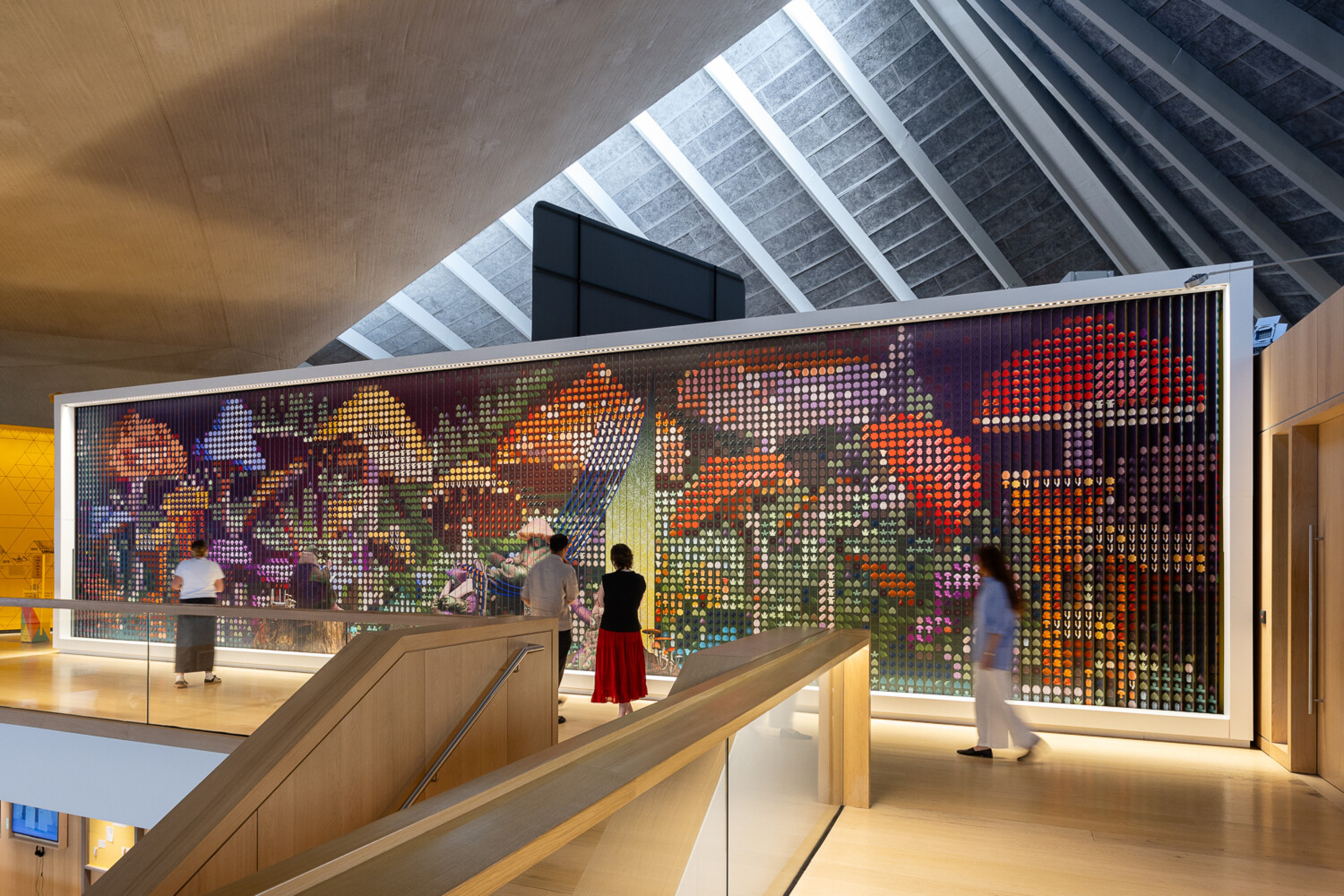
Designs by Lara Lesmes and Fredrik Hellberg (Space Popular) with Shumi Bose
On view from July 2024 and free to experience, the panels consist of 176 constantly rotating prisms. They have been created by architecture and design studio Space Popular (directed by architects Lara Lesmes and Fredrik Hellbergin) in collaboration with architectural historian Shumi Bose. Space Popular is an art, design and architecture studio that explores the future of spatial experience through research, design, and artworks.
